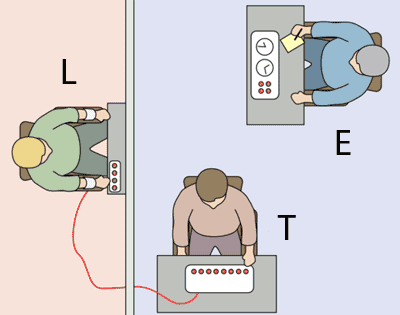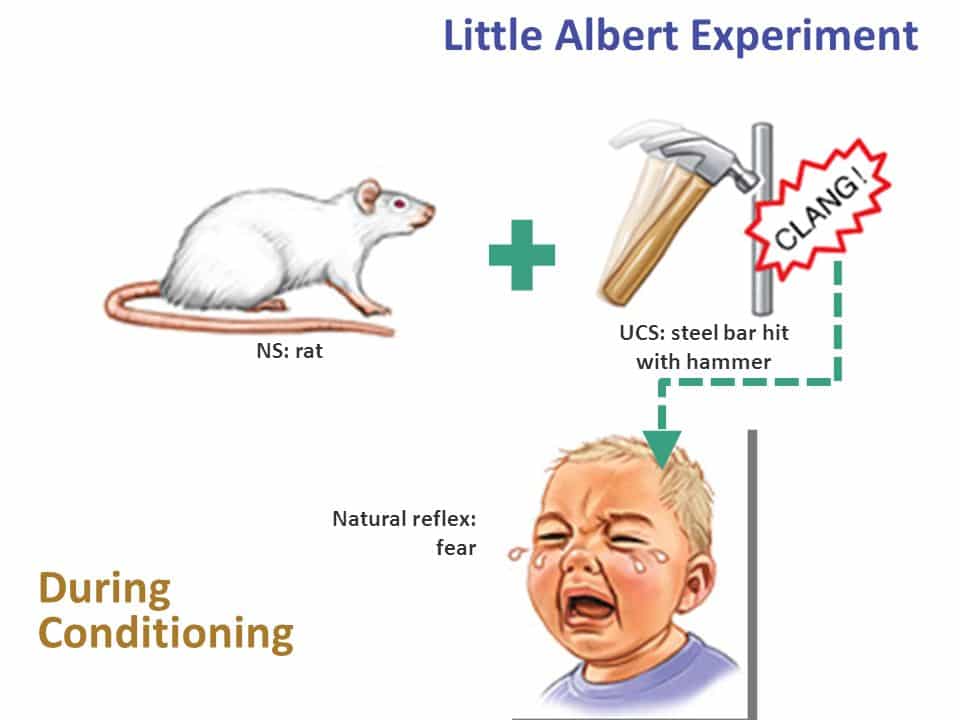“There is nothing either good or bad, but thinking makes it so” wrote Shakespeare in his play Hamlet. This derives a question about ethics and how important it is, because people make it out of nothing. Ethics may be useful in people’s everyday lives, but its benefits are debatable in science, namely in psychological experiments. The concern about ethics in science started after World War II when German scientists did many unethical experiments, yet there were no regulations about ethics in science at that time.
According to the research of Tomasz Ciesielski, a researcher at the Department of Biology of Norwegian University of Science and Technology, the experiments that he and his colleagues have done included freezing, twin experiments, poison and wound experiments and many more (4). In the 1940s, the American and Australian psychologists came up with an ethical code (Allan 446).
Without the ethical code, there can be more reliable results on human psychology due to the participants not being animals and showing accurate information about human psychology instead of some speculations that the animals which have been experimented on will react as a human being would do.
Moreover, although the experiments in psychology are well-organized within an ethical code, there are a significant number of experiments which did not follow the moral code, and the benefits of those experiments outweigh the ethical issues; therefore, an ethical code should not be allowed to restrict research.
There are multiple examples of psychological experiments which were both unethical and beneficial to understanding human psychology. The Milgram Experiment is one of them. The procedure included a participant who was paid to do whatever the scientist wanted.
There were a “learner” and a “teacher”. The participant was told these two were selected with a draw, yet the participant was always the “teacher” and the “learner” was an actor. The “teacher” was to teach pairs of words. If the “learner” did not get it right, then the teacher would give electroshocks to the “learner” which had to be increased as the wrong answers increased, yet the electroshocks were not real and the “learner” was an actor (Ciesielski 15).
The participant, also always the teacher, of the experiment was put through a lot of stress, because even if the participant didn’t want to continue, or was not having electroshocks, he or she was told to continue until rejected for good. That is the reason why people have objected to this experiment on ethical grounds, though the subjects have the free will to participate or not (Ciesielski 16).
However, the experiment showed how people can go further in doing something they were instructed to do so since they are not to blame, since they were just following orders. The experiment and the results were published in the Journal of Abnormal and Social Psychology in 1963. The results were shocking for the psychologists of that time because they estimated just 0.1 percent of the people to give 450-volt, but 67.5 percent of the participants gave the full volt in reality (Ciesielski 16).
There was another experiment called the Stanford Prison Experiment that was more bizarre than the Milgram. The experiment was conducted in 1971 by a team in Stanford University and the head of the team was Philip Zimbardo. According to Ciesielski’s research, the experiment’s participants were twenty-four young males white, psychologically strong and healthy, divided into two groups called ‘prisoners’ and ‘guards’. The prison had strict rules including guards wearing uniforms and mirrored glasses to avoid eye contact. The first day there was a riot, and the experiment was shut down on the sixth day (17-18).
On the sixth day “four of the participants had nervous breakdowns and one had a full body rash” (Taylor 61). Zimbardo talked in 1996 about the experiment: “It was ethical because it followed the guidelines of the Stanford human subjects ethics committee that approved it. There was no deception; all subjects were told in advance that if prisoners, many of their usual rights would be suspended and they would have only minimally adequate diet and health care during the study.” (qtd. in Ciesielski 17).
Zimbardo’s statement is an example of how human experiments should take place, with the participants’ knowledge of the experiment. The experiment was categorized as highly unethical by the public and stirred up a lot of controversies. However, it showed how people can turn ethically wrong in the right circumstances and people are not just unethical because they are born that way, but they can be that way in such situations. Also in a Canadian journal called Maclean’s the experiment and Zimbardo’s book were taught as the standard first-year of the psychology class for decades (Taylor 61).
On the other hand, there have been experiments in which participants raised their voices, even sued the experimenter. Wendell Johnson had done an experiment in 1939 which got him sued after 64 years. The experiment was done on orphans and derived from the question of how stuttering is affected by certain behaviour. The orphans were taken at an early age and at those ages children have some problems of pronunciation.
A group had smiles and instructions about how they could get the pronunciation right, while the other group got angry faces, yells and mocking. Mary Nixon was one of them, and she sued Johnson along with ten more orphans for permanent stuttering. Johnson’s assistant has talked about the experiment in shame after years in an interview done with him while the trials were still going (Dvorak).
However, it is seen that the experiment is scientifically correct and gathered the most information about stuttering. Moreover, Patricia Zebrowski, an assistant professor of speech pathology and audiology at the University of Iowa, talks about the experiment as the “largest collection of scientific information” on the stutter’s psychology in a podcast (Reitzes).
Another disturbing experiment, the Little Albert Experiment, explored the question of how and why fear originates and the conditioned reflex in babies. The experiment had a child who was exposed to a series of masks with an extensive beard on it, and when he touched the beard a sudden, loud sound was made in order to frighten him.
After the exposure Albert started not to touch the mouse he had been playing with earlier on and even the existence of the mouse disturbed him. Albert’s mother was not aware of what her son was exposed to. The experiment did not even have a control group to compare the two (Samelson 620-621).
However, ‘Pavlov’s dogs’ did not have a control group either, yet the experiment is well-known and accepted (Samelson 620). These examples show that unethical experiments which have gone wrong in some ways are still important for psychology. Furthermore, there are experiments which had similar flaws with the unethical ones yet were still accepted.
The popularity of Pavlov’s experiment indicates that the media influences how people think about certain situations in life, and this influence is also one of the major problems with psychological experiments on humans.
Furthermore, the animals people are experimenting on have the same rights as humans on that basis yet the rights which are given by humans are also being violated by humans. Although the experiments are screened by professionals and the experimenters are being tested regularly, there are experiments that are disturbing and done on animals.
Even if the experiments were not outside the regulations, they can still be disturbing when conducted on a human being yet is there any difference between people and every other living thing on Earth on that basis? The New Scientist has an article called “The Whacko Files” examining the experiments on animals which have gone wrong.
In 1954, a Soviet surgeon called Vladimir Demikhov had created a two-headed dog which lived for six days. He was proud of his work and thought that the only issue was about his surgical skills which would be overcome (Boese 54). There was a Robert E. Cornish who experimented on puppies and tried to revive them from death. He actually accomplished it, but unfortunately, they were blind and severely brain-damaged. He was banned from the campus yet continued his experiments on a shack near his house.
He also offered to revive a prisoner who was on death row, and the prisoner accepted it, but the court did not let it happen (Boese 52). These experiments could not be done on humans even at those times. However, Mr. Cornish treated animals as toys to play with and he was punished. In contrast, the experiment did not receive the strong reaction that unethical experiments on humans elicited.
Besides, animals do not always give accurate information about humans in psychological experiments. In Scientific American, Barbara J. King, a biological anthropologist at the College of William & Mary, argues that animal psychology differs significantly from human psychology such that animals should not be used as a source to heal human health (King 12).
These pieces of evidence show how people are not consistent in their judgments, coming up with the rights of animals then violating them without caring, and how animals are not giving accurate information about human psychology.
The experiments have been beneficial to human psychology even if they were unethical and disturbing, even bizarre. This paper disproved the ideas about why unethical experiments should be banned. It showed how people have been hypocritical about ethics when it comes to animal experimentation and how animals are not the source to human psychology. This selection of course should not be random but with the participants’ free will. If the participants are well-instructed and willing to do the experiment, then there should be no more barriers because science would never grow if people cannot answer their questions.
Works Cited
- Allan, Alfred. “Ethics in Psychology and Law: An International Perspective, Ethics & Behavior”. 25:6. 443-457. 2015. Web.
- Boese, Alex. “The Whacko Files”. New Scientist. pg. 49-55. 3 Nov. 2007. Web.
- Cheit, Ross E. “Research Ethics and Case Studies in Psychology: A Commentary on Taus v. Loftus.” Journal of Interpersonal Violence18 (2014): 3290-307. Web.
- Ciesielski, Tomasz, Line-Kirstin Larsen, Claudia Melis, and Chia-Wei Vivian Wang. “Experiments on Humans”. pg. 1-21. Web.
- Dvorak, Todd. “Stuttering Lawsuit Shows How Medical Research Ethics Evolved.” Deseret News. 7 Oct. 2003. Web.
- King, Barbara J. “Ending a Cruel Legacy”. Scientific American. Jun. 2015. Web.
- Samelson, Franz. “J. B. Watson’s Little Albert, Cyril Burt’s Twins, and the Need for a Critical Science”. American Psychologist. 35:7. pg. 619-625. Jul. 1980. Web.
- Reitzes, Peter, and Eric Jackson. “The Common Factors of Stuttering Treatment with Dr. Patricia Zebrowski.” Audio blog post. StutterTalk: Changing how you think about stuttering…one podcast at a time. StutterTalk, 3 Oct. 2010. Web. 24 Dec. 2016.
- Taylor, Peter Shawn. “Human experiments, that staple of academic research, are vanishing”. Maclean’s. 21 May 2007. Vol.120. Issue 19. Web.


